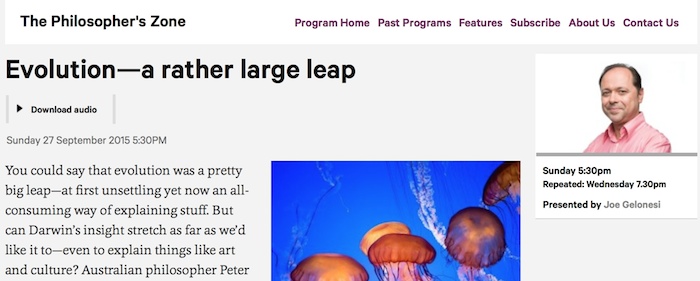I recently did a radio interview with the Australian radio show The Philosopher’s Zone. We covered many of the topics in the book, including cultural evolution, laws of biology, human nature, and a few more. The link is here.

I recently did a radio interview with the Australian radio show The Philosopher’s Zone. We covered many of the topics in the book, including cultural evolution, laws of biology, human nature, and a few more. The link is here.

The last chapter of Philosophy of Biology is about information and communication. A topic not discussed there is “costly signaling” models, or the “Handicap Principle.” This family of ideas has been very influential in biology over the last twenty years or more. It begins with a paper by Amotz Zahavi, published in 1975. Alan Grafen took up the idea in a series of papers, and a lot of people now regard the principle as pivotal in the evolutionary explanation of communication. I’ve always been a bit unconvinced, without being enough of an expert to be confident in my judgments.† But a few days ago, while working through a signaling model for an empirical application (which I’ll discuss here some other time), I worked out one thing that I think really is a problem – a mistake – in how these ideas are applied. Perhaps this argument has been covered by others before – it’s a huge literature – but I’ll go through it here in my own terms.
Continue reading
The organisms above are Riftia tubeworms, which live in the deep sea near hydrothermal vents in the ocean floor. They are the best examples I know of something discussed, cautiously, in Philosophy of Biology, chapter 5, and they are good enough examples for me to agree with some arguments I’d formerly been uncertain about. Continue reading
This website will contain additions and updates to the book Philosophy of Biology, recently released by Princeton University Press.